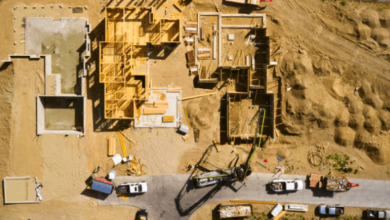The Science Behind Solid Foundations: Exploring Geotechnical Analysis in Construction

Welcome to the fascinating construction world, where every towering skyscraper and sturdy bridge begins with one essential element: a solid foundation. Behind the scenes, science ensures these structures can withstand the test of time and nature’s forces. It’s called geotechnical analysis, a crucial process that examines subsurface conditions to determine the stability and suitability of soil for construction projects. This blog post will delve into the depths of geotechnical analysis.
The Importance of Solid Foundations in Construction
These structures are the bedrock of every building, providing stability and support. Even the most beautiful and impressive buildings can crumble without a strong foundation.
A solid foundation ensures a structure can withstand various forces, such as gravity, wind, and seismic activity. It distributes the weight of the building evenly and prevents settling or shifting over time. This not only keeps occupants safe but also extends the structure’s lifespan.
Geotechnical analysis is crucial in assessing soil conditions at a construction site to achieve a solid foundation. The analysis evaluates soil composition, moisture content, and load-bearing capacity to determine suitable foundation designs.
Various tests are conducted during geotechnical analysis to gather essential data for informed decision-making. Some common tests include soil boring and sampling to examine soil layers’ characteristics and strength, plate load tests to measure bearing capacity, permeability tests to assess drainage capabilities, and slope stability analyses for hilly terrains.
The information gathered from these tests allows engineers to design appropriate foundations explicitly tailored to each project’s unique requirements. For example, deep foundations may be needed in weak soils or high water tables, while shallow foundations work well in stable ground conditions.
Successful projects worldwide demonstrate how effective geotechnical analysis leads to robust foundations that stand the test of time. From skyscrapers towering over city skylines to massive infrastructure projects like bridges and dams, all owe their stability and longevity to thorough geotechnical assessments before construction begins.
Types of Geotechnical Tests and Their Purpose
Geotechnical tests play a crucial role in construction projects, as they provide valuable information about soil and rock properties beneath the surface. These tests help engineers and designers make informed decisions to ensure the stability and safety of structures.
One common type of geotechnical test is the soil boring test. This involves drilling holes into the ground and extracting soil samples at various depths. Experts can determine important factors such as soil composition, density, moisture content, and shear strength by analyzing these samples. This information is essential for designing foundations that can withstand the loads exerted by buildings or infrastructure.
Another important test is the plate load test, which measures the bearing capacity of soils. A large steel plate is placed on the ground’s surface while applying incremental loads. The resulting settlement helps determine how well different types of soils can support heavy structures or equipment.
Additionally, laboratory testing plays a vital role in geotechnical analysis. They will send Samples collected from site investigations to specialized labs for further examination. Tests such as grain size analysis, consolidation tests, direct shear tests, and triaxial compression tests provide detailed insights into soil behavior under specific conditions.
Read also: Navigating the Real Estate Market in Sunshine Coast: How to Find the Best Agent for You
Furthermore, geophysical testing methods like seismic refraction surveys or electrical resistivity measurements map subsurface features like bedrock depth or detect potential hazards such as underground voids or cavities.
Conclusion
We explored the importance of solid foundations and how geotechnical tests help ensure their stability. It is evident that with careful planning, thorough testing, and continuous monitoring, construction professionals can mitigate soil conditions and foundation stability risks.





